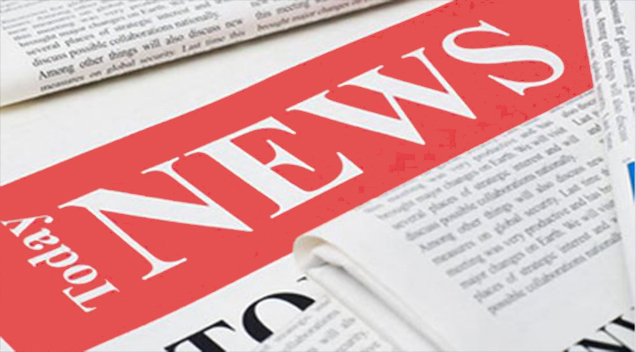 Explore the latest news and new product launch information
Explore the latest news and new product launch information
 A professional team to serve you; High quality after-sales service, worry free quality.
A professional team to serve you; High quality after-sales service, worry free quality.
Fix PCB wiring! Senior Engineer PCB Wiring Experience Sharing
【 Introduction 】 For switching power supplies, PCB wiring is undoubtedly a very important link. However, there seems to be no suitable book on the market to explain this aspect. Today, I would like to share with you my years of experience in PCB wiring, including schematic drawing, PCB packaging, layout, wiring, mechanical, heat dissipation, and EMI considerations. We welcome everyone to participate in the discussion.
Firstly, you need to start this job by mastering a software. There are many software for drawing PCBs, such as protel, AD, PADS, PowerPCB, Allegro, and so on. Of course, these are just tools and we won't discuss how to use a certain software here. The first step is to discuss how to draw a schematic diagram. Many engineers may think that how to draw a schematic diagram is not important, as long as it is drawn correctly. Actually, it's not the case. Drawing is just like programming, one is to be correct, and the other is to have readability and clear logic. If a schematic diagram is too long to be understood by yourself, then it is definitely not a good schematic diagram. It is not difficult to achieve clear logic for the power schematic diagram.
1. Firstly, it is necessary to distinguish between power circuits and control circuits. If you have a simple circuit, it can be placed in a schematic diagram. For example, the power circuit above and the control circuit below. And the initial level segmentation will be obvious. If you are a complex circuit, you can use multiple schematic diagrams, such as one page for PFC, one page for DCDC, one page for PFC control circuit, one page for DCDC control circuit, and a separate page for various protections.
2. Each functional module should have a brief textual description.
3. Try to minimize the use of crossed but disconnected connections. Excessive crossing lines can cause confusion and may result in incorrect connections.
4. Reasonably use network names. Each node in the schematic has a unique netname, so for some nodes that cannot be connected by wire, net can be used to connect. However, the name of net should be relatively vivid and easy to understand. For cross page connections, the global network name should be used.
When drawing schematic diagrams, it is also necessary to cultivate some small good habits, such as:
1. Some devices that need to be close to each other when laying the board should also be drawn together in the schematic diagram.
2. During the first development, some debugging device positions should be reserved to facilitate the addition of devices.
3. Be good at utilizing 0 ohm resistors, which can divide one net into two nets and facilitate wiring. When laying complex circuits, you may find that sometimes many wires are connected to the same net, but they cannot be mixed together. For example, power ground and signal ground. So when wiring, in order to automatically avoid each other, it can be divided into two nets.
The schematic diagram is the beginning and most crucial part of a project. So when drawing a schematic diagram, it should be carefully reviewed, as any minor mistake will lead to significant efforts in the future to make up for it. Once the schematic diagram is completed, it should be numbered, and every modification should be saved as a separate file. Do not overwrite the old file randomly to avoid missing the original file after an error occurs. If the schematic is ready, start preparing the PCB packaging for each device used. In large companies, there are usually strict standards for PCB packaging, and perhaps a dedicated person can make it, so power engineers can save this trouble. But in some small companies, engineers still have to draw the packaging themselves, so what should we pay attention to?
1. The pins of the package must correspond one-to-one with the pins of the schematic, such as electrolytic capacitors. If the pins are correct or incorrect, it would be terrible. 2. To understand the requirements of the production process for packaging, the production line usually accumulates some experience, such as the size of the packaging pad and the high production efficiency. Therefore, engineers should understand these specifications in advance and try to conform to the production line standards when doing packaging. Only in this way can production efficiency be improved. Secondly, different welding processes, such as wave soldering or reflow soldering, will have different requirements for the solder pads.
3. For some symmetrical packages, it is important to pay attention to markings, such as marking 1 pin, to avoid reverse installation. For customized devices, it is best to create asymmetry to prevent reverse reactions. Here is a simple example, such as a chip resistor, which needs to be placed on the bottom layer. It is possible to use reflow soldering or wave soldering with the plugin. If wave soldering is used, the solder pads should be appropriately larger than the solder legs of the resistance in order to facilitate the hanging of tin.
If you start laying out, the first thing to consider is the overall arrangement of the devices. 1. To consider the direction of the power circuit, which accounts for the majority of the PCB area, the direction of this part of the circuit is very important. Usually, for circuits with high power, there are several directions. Linear type: Input on one side and output on the other side. Reflexing: The input and output are on the same side, curved back. Snake shaped: Multiple boards are wound around several bends, such as AB boards, with flying wires connected in the middle (note that the flying wires should run direct current to reduce EMI). Of course, there are also some others. Overall, the power direction should be clear and cannot be randomly crossed.

After determining the approximate power direction, we need to refine the direction of each power circuit separately. Firstly, we need to look at the layout of EMI filters. The general principle of EMI filtering is to keep the input and output as far away as possible. If the input and output are very close, the coupling capacitance between the input and output will cause the high-frequency filtering effect to deteriorate. The filter direction is as follows:

So let's take a look at a simple flyback circuit:

If we consider it from the perspective of structure and heat dissipation, we should pay attention to some details:
Try to balance the weight of the board as much as possible, and do not concentrate heavy objects and components in a certain area;
Do not gather all the heat source components together, otherwise they will increase the temperature rise mutually;
● Devices that are sensitive to heat, such as electrolytic capacitors, should not be near heat sources or the downdraft of heat sources;
For air-cooled power supplies, attention should be paid to the smoothness of the air duct, and the heating device should be located at the lower air outlet as much as possible, while the heat sensitive device should be located at the upper air outlet;
For devices that are prone to breakage, such as ceramic capacitors, do not place them in areas where PCBs are prone to bending, such as near positioning holes;
In addition, there is also an important aspect that requires prior understanding of safety regulations. It is important to know the product you are designing and which safety regulations will be passed in which region in the future. Consider the requirements for various creepage distances and electrical clearances in advance. In fact, there are many detailed requirements for safety regulations. For R&D engineers, it is necessary to communicate with safety regulations engineers from the beginning to understand some details. The most important details are roughly these,
The distance between the live wire and the zero wire in front of the fuse.
The distance between primary, secondary, and earth.
The distance between two different potential points. Regarding the layout of the control circuit, usually for complex power sources, the control circuit is divided into a control part and a drive part. The driving part is between the power circuit and the signal circuit, and is a certain source of interference, with stronger anti-interference ability than the signal circuit.
For simpler circuits, the control and driver are integrated together. Therefore, it should be noted that: 1. The layout of the control circuit should be as far away from the power circuit as possible and should not be mixed with the power circuit. It is particularly necessary to avoid nodes with large dv/dt and loops with large di/dt. 2. The layout should be centered around the IC, with priority given to capacitor devices such as oscillating capacitors and decoupling capacitors. Because capacitive devices play a role in filtering out high-frequency noise, in order to reduce parasitic inductance, they should be as close to the pins of the IC as possible. 3. The driving circuit must be close to the MOS, so that the loop of the driving circuit is relatively small. One is to reduce interference, and the other is to reduce parasitic inductance on the driving line. After the preliminary layout is completed, we need to focus on how to wire it. For power supplies, wiring is not simply connected, there are many details to consider. Firstly, in terms of wiring, you need to understand the process level of the cooperating PCB manufacturers. For example, if you use a copper thickness of 1 ounce, the minimum wire width and minimum spacing that a typical manufacturer can make is about 5mil. If you design too small, it will result in the process not being able to achieve it. The thicker the copper, the larger the minimum line width and spacing. Usually, 2 ounces require more than 7 mils, while 3 ounces require more than 8 mils. Of course, these all depend on the technological level of each PCB manufacturer. So before setting wiring rules, it is important to understand these first.
Next, you should know how much current requires and how wide a copper sheet is. The so-called current density of the wiring, which has no unique standard, is completely limited by the temperature rise of the copper wire. For PCB wiring, it is nothing more than copper sheet, so not only does wiring have resistance, but it will generate heat and voltage drop. In high-frequency switching power supplies, another parasitic parameter brought about by wiring may be more noteworthy, which is parasitic inductance. Each wiring brings either large or small parasitic inductance. These inductors bring vibrations and noise.
Let's take a look at the wiring of three capacitors and discuss the impact of PCB wiring on capacitor performance.

The one on the left is beneficial for absorbing high-frequency noise, while the copper resistance in the middle is the smallest and the loss is relatively small. The one on the right is very unreasonable because the wiring inductance is connected in series with the capacitor, which weakens the high-frequency absorption capacity of the capacitor. When wiring, try to avoid sharp corners as much as possible, which is mainly the wiring rule for high-frequency circuits. Because there is a change in impedance at the sharp angle, but the charge density at the sharp angle is relatively high, which is a relatively large interference area. Although this rule is not as important as high-frequency circuits in power supply design, it should also be avoided as much as possible.